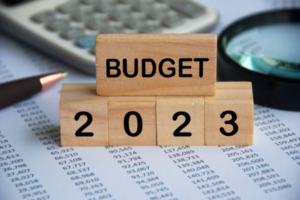Federal Budgets are about resource allocation and national priorities, expressed as numbers. For the 2023-24 Federal Budget there are some notable numbers beyond the allocation of national resources.

The big number is the $4.2 Billion surplus, as it:
- has been 15 years since the last surplus, and;
- has been 34 years since Paul Keating delivered a Labor surplus in 1989;
- comes only 6 months since Dr Chalmers presented his first Federal Budget back in October
- represents a $41 Billion turnaround from the October deficit
The surplus is generally considered to be a combination of windfall gains due to low unemployment, high corporate profits and restrained spending since taking office last year, as $40 billion of savings have been realised in the last two budgets.
Perhaps the dichotomy of geopolitical instability and the Russian invasion of Ukraine driving inflation into corporate profits and a Government revenue windfall, whilst simultaneously creating wide-spread cost of living pressures is not lost on the Government, as they have certainly delivered what many would consider a very Labor Budget.
Beyond the tax and superannuation announcements covered below, the centrepiece of the Budget is an unprecedented investment in Medicare and a cost-of-living relief package, along with affordability of pharmaceuticals and medical treatment more generally, continued investment into NDIS, Aged Care, Child Care affordability, mental health, women’s safety, measures to “get wages moving again” and increases in various welfare payments. For business and industry, there is a focus on renewable energy and energy efficiency, including for households, skills training and apprentices and skilled migration.
As usual there is a vast amount of economic data in the Budget, with some of the key points being:
- A surplus of $4.2 billion for 2022-23, but a deficit of $13.9 billion 2023-24.
- Economic growth is expected to be 3.25% for 2022-23, 1.5% for 2023-24 and 2.25% the year after.
- Unemployment is expected to remain at 4.25% for 2023-24 and 4.5% the year after.
- Inflation is expected to be at 6% for 2022-23, but drop to 3.25% in 2023-24, before returning to the Reserve Bank target range in 2024-25.
As is customary, discussion and any sign of genuine tax reform is absent, but with the acknowledged structural deficits in place the Government will need to hold court on alternative ways to raise revenue, in addition to just having restraint on expenditure. Time will tell if they are bold enough to conquer, yet brave enough to fail on having a thorough discussion on tax reform.
For more information please read our articles on the Individual & Personal Taxation or Business Taxation updates within the May 2023 Federal Budget.
